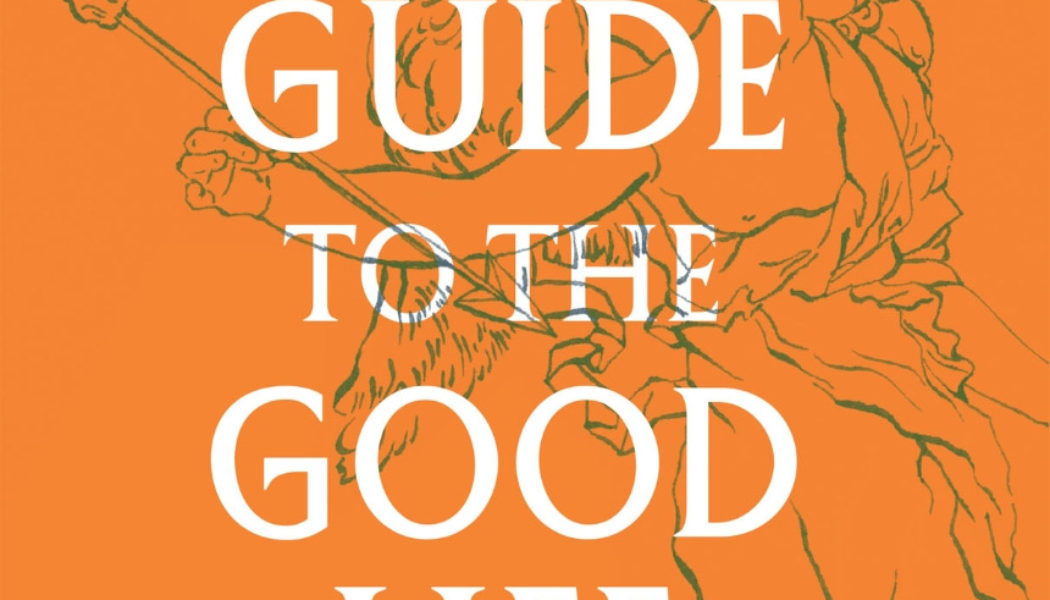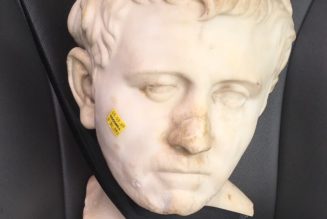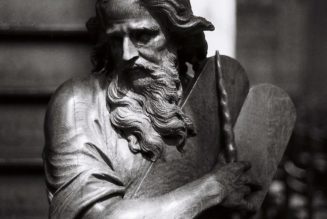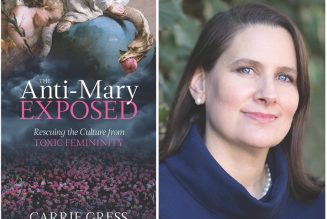In a letter to Nancy Mitford, a Francophile English novelist living in Paris, Evelyn Waugh wrote, “Say what you will about your [French], but when it comes to fun the [Italians] are still Top Nation.” When it comes to philosophy, as Scott Samuelson recognizes in Rome as a Guide to the Good Life: A Philosophical Grand Tour, Rome is still Top City, at least in terms of human things. “Rome is the city, the place where our humanity is writ large. I don’t know of any education in the soul more efficient and exciting than reading Rome…. It’s a feeling of being as large as possible in your humanity while still feeling human” (4-5). The introduction is entitled “Philosophy as a Guide to La Dolce Vita,” and the book stands out in its dual appreciation for Rome as a locus for the sweet life and the life of the mind. This is not a book that could be written by any expert in Roman authors who has spent time in the city. Samuelson has been honored as a professor who, as his biography notes, “has taught the humanities in universities, colleges, prisons, houses of worship, and bars.” The book very much gives the impression of a teacher who is comfortable with various students and in various situations, which is indeed what leading students in Rome demands, where vespas, hawkers, and rival tour groups mean that the good guide is the one who can shift registers while maintaining purpose and a sense of humor. The author’s wit, enthusiasm, and willingness to turn his head and squint his eyes while looking at what seemingly has been picked over by centuries of cicerones makes reading Rome as a Guide like being on the most engaging of walking tours. I do similar work as does the author, teaching courses in Rome and leading students on excursions, and yet despite my 20 years of experience, I learned much from this book.
The author’s deep appreciation for the Roman intellectual tradition, as evident in chapters on Cicero, Marcus Aurelius, Lucretius, Horace, and Seneca, may be of special value for the Classical Education movement. It has both benefited from and been limited by the Romantic philhellenism that has shaped Western attitudes towards classical antiquity since the late eighteenth century. The Germans, for example, distinguishing themselves from the French, the heirs linguistically and culturally to the Romans, cultivated Griechenthusiasmus, seeing themselves as the new Hellenes. In Ireland, W. B. Yeats told his son’s schoolmaster to teach him only Greek as the Romans were “the classical decadence.” This attitude informs the curricula of Great Books programs and often too their graduates who go on to teach. Yet the authors whom Dante, Shakespeare, and centuries of European students read were Cicero and Ovid, Vergil and Horace, not Homer and Plato. Of course, Vergil acknowledged Greek cultural superiority when Anchises tells Aeneas that others will excel his Romans in the arts, but Samuelson’s focus on the beata vita serves as a reminder that there is, in contrast to the Greek theoretical genius, a Roman perspicacity about human things, the life well-lived, especially communal life. From his reading in the Roman authors and from his extensive knowledge of Rome gained by teaching there, Samuelson uses the city and its heritage to offer frequently rich reflections on the good life.
The first chapter, inspired by the grave of Rosa Bathurst at the Protestant Cemetery, immediately has the reader thinking about death, and Samuelson repeatedly uses Roman sites and persons to provoke thought on the most essential human questions. Sections with titles such as “Build Not Thereon,” “Reap The Day,” and “Love And Do What You Will” give some sense of the book’s ambition, though the reflections are never heavy-handed, and indeed at first I wondered if the shortness of the chapters was keeping the reader from attending sufficiently to the significance of something like the vivacious English girl’s death. But just as a really fine onsite talk may in ten minutes do more to leave a student thinking than does a long classroom lecture, so too does the book work effectively through its quick engagements. Of particular contemporary value are insights about pietas as allowing one to avoid the extremes of rootlessness and bigotry; and decorum as “a more aesthetically oriented form of prudence” which allows for the mastery of “the grammar of social life to enhance human well-being.” Likewise, the emphasis on thinkers who reflect on how to enjoy life and avoid anxiety is obviously timely. It’s a book full of passages worth noting. Particular favorites include those on Caravaggio’s head of Goliath, Roman cuisine as expressing the spirit of Giambattista Vico and not Rene Descartes, and mastery, as exemplified by the poetry of Horace, as “freedom in the sense of powerful play” (105).
Another strength of Rome as a Guide, however, makes its most notable weakness stand out. Samuelson treats sympathetically a range of authors, showing respect for and interest in some who may be unappealing to contemporary readers, even the eccentric Giordano Bruno. That engagement is one of the ways in which the book seems like an excursion led by a genial and open-minded teacher. It is then jarring that only one approach to the good life is subject to attack, Christianity: “Originally an antimoralistic religion, Christianity is prone to obnoxious moralism. It’s easy to do evil when you’re saving people’s souls.” Christianity too is “usually ugly” and “produces a particularly repellent form of hypocrisy among the rich,” and leads people to “torture them[selves] with guilt and torture others in the name of justice” (144). The author again adopts a contemptuous tone when he likens Christian discussion of salvation to “the kooky lessons of an LSD trip” (159). More subtle digs run throughout the book, especially against the Roman Catholic faith. I do not know the author’s background, but he clearly knows the history of ideas and can reference Augustine and Aquinas as major thinkers. The insults, however, seem grounded in an old-fashioned Puritanism and often are theologically uninformed (I’m reminded of a criticism that my friend Michael Terranova has offered about Great Books and Great Ideas academic programs, that they tend to leave students confident in their learning but without much theological knowledge and therefore prone to speak simplistically about religious topics; the first seven ecumenical councils are not reprinted in the Harvard Classics 50-volume series). In a book attractive in its willingness to consider a range of perspectives, it does not make sense, even on historical grounds, to dismiss offhandedly the perspective on the good life that has most profoundly shaped life in Rome over the last two millennia. The veneration of the saints, for example, is not “resurrected” polytheism (155), but for Catholics the honor due those who so imitated Christ that they serve as models of holiness and may be invoked as intercessors. Samuelson mocks Roman churches as “dance halls” (80), but Catholics understand that beauty in worship may lift the soul to greater communion with God. The book’s deficient treatment of the Baroque, the astonishing artistic expression of the Catholic Reformation which more than any other preceding era still shapes the face of contemporary Rome (and draws travellers to it), follows from the dismissal of religious belief and practice. Caravaggio and Bernini are rightly honored, though the latter “isn’t a particularly profound artist” despite his “dramatic energy” (39). The energy of the Baroque, however, its exuberance, and the sense of human life as a great drama with the world as its stage follow from the explicit rejection at Trent of Protestant teaching on inhering sinfulness and the assertion that human beings may cooperate with God in their salvation and participate in the divine life, as Bernini expresses most famously in Teresa in Ecstasy and tragicomically in the Church of Sant’ Andrea al Quirinale. This is not an argument for the Catholic faith, but it is an argument that the theology that inspired Rome’s greatest art deserves at least as respectful a treatment as does Mithraism, all the more so in that its claims are very much in the spirit of “being as large as possible in your humanity while still feeling human.”
To put it another way, wouldn’t St. Philip Neri, whose image is still found in the alleys of the Campo Marzio, who while wandering about the city told jokes, played pranks, and made friends with most everyone, including Rome’s poorly-treated Jews—the “Second Apostle to Rome”; “the Roman Socrates” as Goethe called him; a man whose life was analogous to the effect that the study of secular literature has in a university, according to John Henry Newman—wouldn’t Philip Neri be a more accurate representative of a Roman idea of the beata vita, and even for the vast majority of non-believers a more attractive one, than Giordano Bruno, whose arrogance and weirdness provoked Calvinists, Anglicans, and Lutherans to chase him away, before the religiously tolerant and worldly Venetians handed him over to the Roman Inquisition?
Maybe more summers in Rome could lead to a more balanced second edition. In all other respects, Rome as a Guide to the Good Life is a fine book, of special value for the thoughtful traveller.
Andrew Moran is an associate professor of English at the University of Dallas and director of its summer Rome programs, including Classical Education in Rome, which offers optional credit for teachers at classical schools pursuing an M.A.












